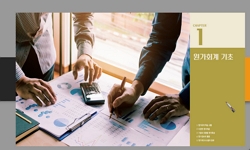The study of human behavior during driving is of primary importance for improving the driver’s security. In this study, we propose a hierarchical driver_vehicle_environment fuzzy system to analyze driver’s behavior under stress conditions on a roa...
http://chineseinput.net/에서 pinyin(병음)방식으로 중국어를 변환할 수 있습니다.
변환된 중국어를 복사하여 사용하시면 됩니다.
- 中文 을 입력하시려면 zhongwen을 입력하시고 space를누르시면됩니다.
- 北京 을 입력하시려면 beijing을 입력하시고 space를 누르시면 됩니다.
https://www.riss.kr/link?id=A104902983
-
저자
Sehraneh Ghaemi (University of Tabriz) ; Sohrab Khanmohammadi (University of Tabriz) ; Mohammad Ali Tinati (University of Tabriz) ; Mohammad Ali Badamchizadeh (University of Tabriz)
- 발행기관
- 학술지명
- 권호사항
-
발행연도
2012
-
작성언어
English
- 주제어
-
등재정보
KCI등재,SCIE,SCOPUS
-
자료형태
학술저널
-
수록면
517-528(12쪽)
-
KCI 피인용횟수
2
- 제공처
-
0
상세조회 -
0
다운로드
부가정보
다국어 초록 (Multilingual Abstract)
The study of human behavior during driving is of primary importance for improving the driver’s security. In this study, we propose a hierarchical driver_vehicle_environment fuzzy system to analyze driver’s behavior under stress conditions on a road. We include climate, road and car conditions in fuzzy modeling. For obtaining fuzzy rules, experts’ opinions are benefited by means of questionnaires on effects of parameters such as climate, road and car conditions on driving capabilities. The number of fuzzy rules is optimized by Particle Swarm Optimization (PSO) algorithm. Also the frequency of pressing on brake and gas pedals and the number of car’s direction changes are used to determine the driver’s behavior under different conditions. Three different positions are considered for driving and decision making; one position in driving lane and two positions in opposite lane. A fuzzy model called Model 1 is presented for modeling the change of steering angle and speed control by considering time distances with existing cars in these three positions, the information about the speed and direction of car, and the steering angle of car. The behaviors of different drivers under two stress conditions are investigated. Also we obtained two other models based on fuzzy rules called Model 2 and Model 3 by using Sugeno fuzzy inference. Model 2 has two linguistic terms and Model 3 has four linguistic terms for estimating the time distances with other cars. The results of three models are compared. The com-parative studies have shown that simulation results are in good agreement with the real world situa-tions.
참고문헌 (Reference)
1 H. Kamada, "Visual control system using image processing and fuzzy inferences" 23 (23): 13-25, 1992
2 A. Wahab, "Understanding driver behavior using multi-dimensional CMAC" 1-5, 2007
3 J. Kennedy, "Swarm Intelligence" Morgan Kaufmann Publishers 2001
4 M. Sugeno, "Structure identification of fuzzy model" 28 (28): 15-33, 1988
5 T. Pal, "SOGARG: a self-organized genetic algorithm-based rule generation scheme for fuzzy controllers" 7 (7): 397-415, 2003
6 M. Spong, "Robot Modeling and Control" John Wiley & Sons 2006
7 S. Hoogendoom, "Perspectives of fuzzy logic in traffic engineering" 1999
8 R. E. Fenton, "On the optimal design of an automotive lateral controller" 37 (37): 108-113, 1988
9 T. Gohara, "Heart rate variability change induced by the mental stress: the effect of accumulated fatigue" 367-369, 1996
10 T. Hessburg, "Fuzzy logic controller for lateral vehicle guidance" 1993
1 H. Kamada, "Visual control system using image processing and fuzzy inferences" 23 (23): 13-25, 1992
2 A. Wahab, "Understanding driver behavior using multi-dimensional CMAC" 1-5, 2007
3 J. Kennedy, "Swarm Intelligence" Morgan Kaufmann Publishers 2001
4 M. Sugeno, "Structure identification of fuzzy model" 28 (28): 15-33, 1988
5 T. Pal, "SOGARG: a self-organized genetic algorithm-based rule generation scheme for fuzzy controllers" 7 (7): 397-415, 2003
6 M. Spong, "Robot Modeling and Control" John Wiley & Sons 2006
7 S. Hoogendoom, "Perspectives of fuzzy logic in traffic engineering" 1999
8 R. E. Fenton, "On the optimal design of an automotive lateral controller" 37 (37): 108-113, 1988
9 T. Gohara, "Heart rate variability change induced by the mental stress: the effect of accumulated fatigue" 367-369, 1996
10 T. Hessburg, "Fuzzy logic controller for lateral vehicle guidance" 1993
11 R. L. Welch, "Comparison of two optimal control strategies for a grid independent photovoltaic system" 3 : 1120-1127, 2006
12 "Cardiovascular Advisory Panel Guidelines for the Medical Examination of Commercial Motor Vehicle Drivers"
13 Y. Lin, "Artificial neural network modeling on driver handling behavior in the driver-vehicle-environment system" 37 (37): 24-45, 2005
14 C. C. MacAdam, "Application of elementary neural networks and preview sensors for representing driver steering control behavior" 25 : 3-30, 1996
15 C. C. MacAdam, "An optimal preview control for linear systems" 102 (102): 188-190, 1980
16 P. E. An, "An intelligent driver warning system for vehicle collision avoidance" 26 (26): 254-261, 1996
17 A. Y. Lee, "Algorithm for four-wheel-steering passenger vehicles" 114 : 401-407, 1992
동일학술지(권/호) 다른 논문
-
- 제어·로봇·시스템학회
- 성화창
- 2012
- KCI등재,SCIE,SCOPUS
-
A Vertical and Floor Line-based Monocular SLAM System for Corridor Environments
- 제어·로봇·시스템학회
- 장국현
- 2012
- KCI등재,SCIE,SCOPUS
-
- 제어·로봇·시스템학회
- 이준한
- 2012
- KCI등재,SCIE,SCOPUS
-
Robust H∞ Control of Uncertain Nonlinear Switched Systems using Constructive Method
- 제어·로봇·시스템학회
- Ben Niu
- 2012
- KCI등재,SCIE,SCOPUS
분석정보
인용정보 인용지수 설명보기
학술지 이력
| 연월일 | 이력구분 | 이력상세 | 등재구분 |
|---|---|---|---|
| 2023 | 평가예정 | 해외DB학술지평가 신청대상 (해외등재 학술지 평가) | |
| 2020-01-01 | 평가 | 등재학술지 유지 (해외등재 학술지 평가) |  |
| 2010-01-01 | 평가 | 등재학술지 유지 (등재유지) |  |
| 2009-12-29 | 학회명변경 | 한글명 : 제어ㆍ로봇ㆍ시스템학회 -> 제어·로봇·시스템학회 |  |
| 2008-01-01 | 평가 | 등재학술지 유지 (등재유지) |  |
| 2007-10-29 | 학회명변경 | 한글명 : 제어ㆍ자동화ㆍ시스템공학회 -> 제어ㆍ로봇ㆍ시스템학회영문명 : The Institute Of Control, Automation, And Systems Engineers, Korea -> Institute of Control, Robotics and Systems |  |
| 2005-01-01 | 평가 | 등재학술지 선정 (등재후보2차) |  |
| 2004-01-01 | 평가 | 등재후보 1차 PASS (등재후보1차) |  |
| 2002-07-01 | 평가 | 등재후보학술지 선정 (신규평가) |  |
학술지 인용정보
| 기준연도 | WOS-KCI 통합IF(2년) | KCIF(2년) | KCIF(3년) |
|---|---|---|---|
| 2016 | 1.35 | 0.6 | 1.07 |
| KCIF(4년) | KCIF(5년) | 중심성지수(3년) | 즉시성지수 |
| 0.88 | 0.73 | 0.388 | 0.04 |






 KCI
KCI






